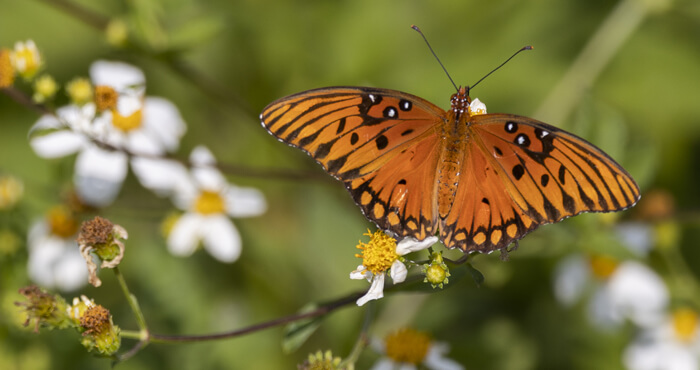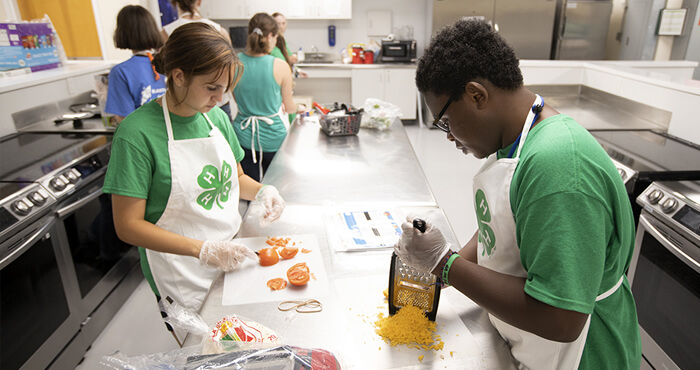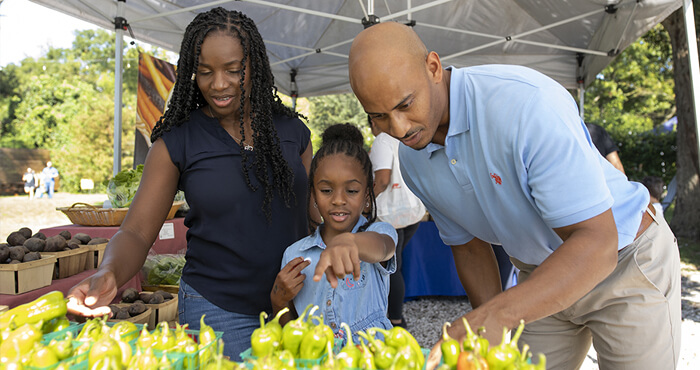
Growing Roses
Here in Florida, roses grow and bloom year-round in the majority of the state. Successfully growing roses in Florida depends on selecting varieties that perform well in our state and conform to your lifestyle.
Choosing Roses
Roses can be either low- or high-maintenance. Low-maintenance roses require little care and include the "old garden roses" and shrub roses. Hybrid tea, grandiflora, floribunda and polyantha roses (“modern” roses) are considered high-maintenance since they require frequent grooming, fertilizing, watering, and spraying.
Hybrid roses grafted on 'Fortuniana' rootstock perform the best. “Old” and dwarf varieties will do well with their own roots, but often perform better when they are grafted.
Beyond low- or high-maintenance and rootstock choice, variety selection depends on your personal preference and needs when growing roses.
Planting
Roses can be planted year-round except in north Florida, where planting is better in early spring. Nurseries sell potted roses year-round; bare-root plants are usually available from October to March. Bare-root plants are not usually grafted onto ‘Fortuniana’ rootstock and may not do well.
Roses need at least 6 hours of direct sunlight each day. Plant them in a full-sun location with well-drained soil. Most soils will have to be amended, especially for modern roses. Add 2 to 4 inches of organic material to the rose bed and mix it to a depth of 12 inches.
To move a container-grown rose to your yard, plant the rose at the same depth that it was growing in the container to make sure the graft union stays above the soil. Apply mulch around each plant and irrigate frequently for 6 to 8 weeks to establish.
Maintenance
Irrigation & Fertilization
Modern varieties will need frequent irrigation, and low-maintenance varieties will appreciate occasional irrigation.
The season and the location and size of the plants will determine the amount of fertilization. Regardless of the amount, choose a fertilizer specifically intended for growing roses with micronutrients and controlled-release nitrogen.
Fertilize once a month from mid-February to mid-November (in South Florida these monthly applications can be made year-round). Apply 1 cup of fertilizer per plant monthly or ½ cup bi-monthly; reduce this amount for small plants.
Grooming & Pruning
Grooming means trimming roses to keep them healthy, attractive, and productive. Grooming frequency will depend on the type of rose and your preferences. To groom your plants:
- Remove faded flowers after each bloom cycle.
- Break off suckers that grow from the rootstock.
- Remove dead wood and canes showing disease symptoms.
Prune hybrid teas, grandifloras, and floribundas in February or March in North and Central Florida and December in South Florida. When you prune, do the following:
- Remove twigs and branches that are dead, diseased, injured, or spindly.
- Shorten main canes and lateral branches.
- Leave at least half the length of each main cane that is 1 to 3 years old.
- Make pruning cuts just above a dormant bud. Remove whole branches with a smooth cut at the point of juncture.
Cut Flowers
Before cutting flowers for an arrangement, consider how they will be used and what types of blooms you need.
Cut flowers once the green sepals fold back toward the stem and the outside petals loosen and start to unfurl. Buds cut sooner will be too tight and will not open.
Use a sharp knife or pruning shears to cut flowers. Make a clean cut just above a well-developed leaf to prevent die-back.
Pest Management
Black spot is the biggest disease problem when growing roses in Florida. This fungal disease occurs in humid, wet weather. Use drip irrigation to help keep foliage dry and less susceptible to black spot infection. Sanitation also plays a major role in managing black spot infections.
During winter pruning, remove all leaves from the plants, and rake the area beneath the bush to remove dead and diseased leaves that have fallen during the year. Re-mulch immediately to create a physical barrier between the plant and the fungal spores on the ground, which prevents re-infection. Begin spraying as new growth emerges and continue throughout the growing season.
Most low-maintenance roses are somewhat resistant to black spot and will survive with few to no sprays.
Powdery mildew is another fungal disease seen on roses in spring or late fall when the days are warm and nights are cool. Unlike black spot, this disease rarely kills the plant. Other common pests of roses include aphids, spider mites, caterpillars, and thrips. Frequently monitoring your roses will help you detect early infestations.
For more information on caring for roses and pest and disease management, contact your local Extension office.
Excerpted and adapted from:
S. Park Brown, "Growing Roses in Florida" (CIR 344), Environmental Horticulture Department (revised 12/2013 and 12/2016).
Resources
Other UF/IFAS Sites
- Gardening Solutions
- Entomology and Nematology Department
- Environmental Horticulture Department
- FAWN: Florida Automated Weather Network
- Florida-Friendly Landscaping™ Program
- Florida Master Gardener Program
- IPM Florida
- Pesticide Information Office
UF/IFAS Publications
- Florida-Friendly Landscaping™ Program
- Central Florida Gardening and Landscaping Fact Sheets
- Starting a Garden
State & Federal Agencies
- Florida Department of Agriculture and Consumer Services (FDACS)
- Florida Department of Environmental Protection (FDEP)
- Florida Energy Systems Consortium (FESC)
- U.S. Environmental Protection Agency (EPA)
- USDA Plant Hardiness Zone Map--U.S. National Arboretum
Organizations & Associations
- American Community Gardening Association
- American Horticultural Society
- Florida Native Plant Society
- Florida Nursery, Growers and Landscape Association (FNGLA)
- North American Native Plant Society
Other Sites & Publications
UF/IFAS Mobile Web Apps



.jpg)

.jpg)
